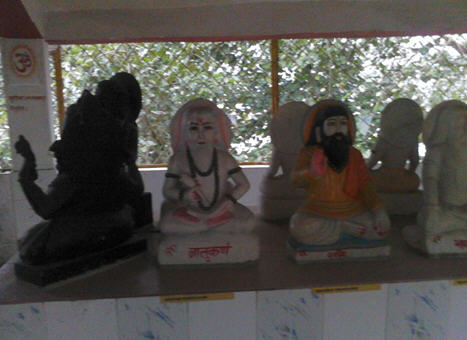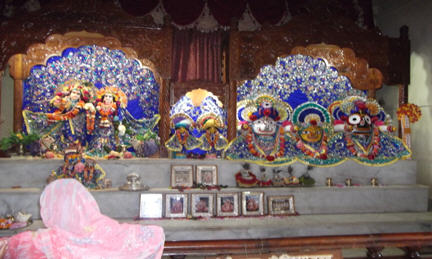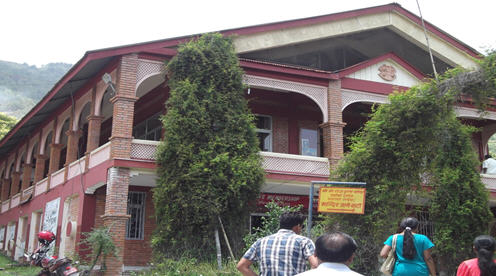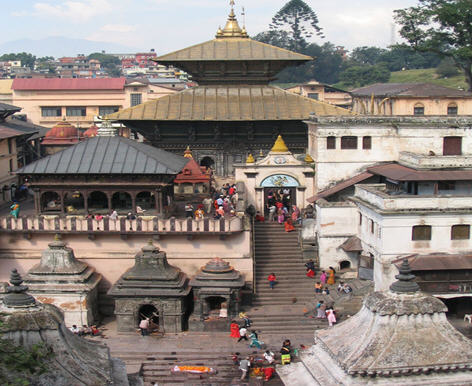
The city lies about 14 kilometres East of Kathmandu and can be reached by public transport and by trolley buses. Situated at an altitude of 1,401 metre, Bhaktapur covers an area of 4 square miles. Shaped like a conch-shell. Bhaktapur means the city of devotees. Pottery and weaving are its traditional industries.
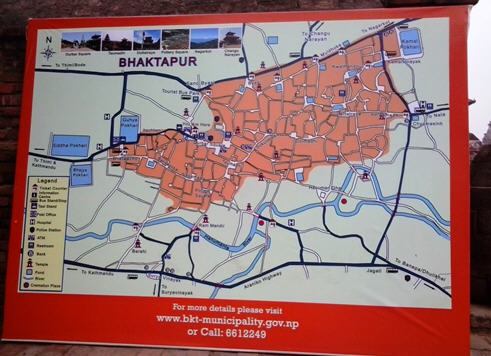

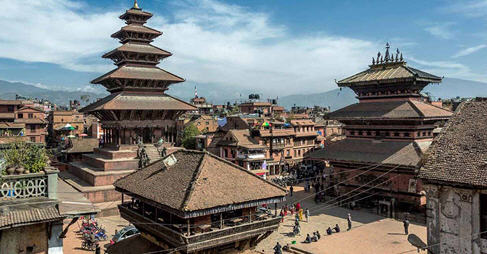
Bhaktapur is filled with many old and historic temples. Around 500 years back, a great devoted king Mallaraj used to rule this place. He would daily visit Pashupatinath temple to worship. As he grew old, he could no longer go there, so the Lord appeared in his dream and told him to make a replica deity of Pashupatinath in his own kingdom and worshiping them will be non different than worshipping direct Pashupatinath. King then built a small but beautiful temple of Pashupatinath in his kingdom. The devoted king on the same lines also made char dham temples also. i.e he constructed small yet replica deities of Rameshwaram, Dwarka, Jagannath Puri and Badrinath.

There is also an ancient Narsingha temple in the vicinity and 300 year old small but beautiful deities of Lord Jagannath Baldev and Subhadra devi sits in a small shed which is currently being worshipped by congregation devotees of ISKCON Bhaktapur.

This temple is located in a place where few centuries ago stood Markandeya sarovar. The place where Markandeya muni once performed penance. Glory of this former sarovar was that if anyone would see his face in the reflection of the water, he would be able to mystically see his last life’s face in it and thus know about who exactly was he in his last life. This sarovar was covered over by mud by one cruel king who when saw his face in reflection. This made him angry and on the false pretext of this sarovar being a false one, he got it covered over.
Also closeby is the famous temple of Changu Narayan.
Changu Narayana
Changu Narayana is one of the most ancient places of pilgrimage in Kathmandu valley where Lord Almighty (Narayana- bearer of universe with all terrestrial and celestial things) resides at the pray of gods and goddesses. Narayana is another name of Lord Vishnu and this temple dates back around 2 millennia from now. It is said to bear the testimony that the state religion of ancient Nepal was Vaishnavism. The Garuda dhwaja, a tall column of stone inscription, erected by Manadeva, the famous Lichchhavi King of ancient Nepal, in 464 A.D. reads:
The greatest god, Lord Vishnu, resides in Dolashikhar (the swing like hill, called Changu in local tongue) at the pray of other gods handling the movement of all three worlds: celestial, terrestrial and sub-terrestrial; so beautifully adorned by conch shell and Sudarshan wheel in his hands which are emerging from lotus coloured broad chest sprinkling bliss and heavenly ecstasy on humans on earth.
It is believed that every Wednesday, Badri Narayana from Badrinath visits this place. So milk pudding (Sweet rice or payasam) is offered on this day. Besides, the hill top area of the temple commands the whole view of Kathmandu valley. There is an unfinished stone carving of elephant which sweats occasionally when uncalled upheavals and disasters are going to happen in the valley.

